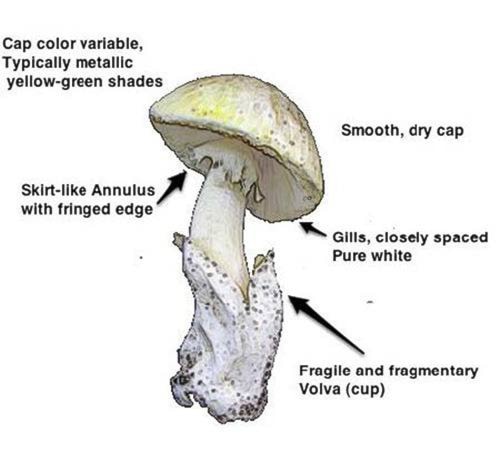Provincial Health Services Authority
BC Centre for Disease Control
Ministry of Health
The BC Centre for Disease Control and Vancouver Mycological Society are warning recreational mushroom hunters to use caution and common sense when foraging wild mushrooms.
The warning follows an increase in calls to the BC Drug and Poison Information Centre (DPIC) this July as well as the seasonal appearance of Amanita phalloides, also known as the death cap mushroom, which is increasingly popping up in Vancouver neighbourhoods and in other regions of the province.
“In a typical July we might get a dozen calls regarding exposures to poisonous foraged mushrooms, and this year we’ve had double that,” said Dr. Roy Purssell, medical director of DPIC. “We’re especially concerned about death cap mushrooms, which are highly toxic.”
Death cap mushrooms are not native to B.C. They are believed to have been introduced into the environment in the roots of imported hardwood trees such as Hornbeam, a popular variety that was planted widely in Vancouver in the 1960s and 1970s. The fungus lives in the roots of trees for 40 to 50 years before emerging.
“We first discovered the death cap in Vancouver in 2008,” said Paul Kroeger with the Vancouver Mycological Society. “Given the trees they live in were planted in the 1960s and 70s, we are seeing more and more appear every year and we believe that trend will continue.”
Kroeger says death cap mushrooms first appeared in BC in the Victoria area and the Fraser Valley, and more recently in and around Vancouver.
Nobody has died from a BC death cap mushroom. There are many other varieties of wild mushrooms that are less toxic than death caps but can also cause severe illness.
Tips to stay safe while mushroom hunting:
• If you are unsure, don’t eat it!
• Only pick and eat mushrooms that are well known, distinct and easily identifiable.
• Eat small amounts.
• If you suspect you’ve consumed a poisonous mushroom, call DPIC (1-800-567-8911 or 604-682-5050) and seek medical attention or call 9-1-1;
• Keep a sample of the mushroom or food that was eaten.
• Only hunt for mushrooms in safe terrain and exercise extreme caution if in remote areas.
Amanita phalloides (death cap):
• Believed to kill more people worldwide than any other mushroom.
• Toxins include phallotoxin, amatoxin and virotoxin.
• Symptoms include nausea, vomiting, watery diarrhea, low blood pressure, liver failure and kidney failure.
• Illness begins eight to 12 hours after ingestion, beginning with gastrointestinal symptoms like vomiting and diarrhea, followed by apparent recovery. Gastrointestinal symptoms recur and damage to the kidney and liver progresses over the next three to six days.
Visit www.bccdc.ca or visit www.phsa.ca
